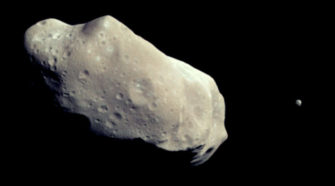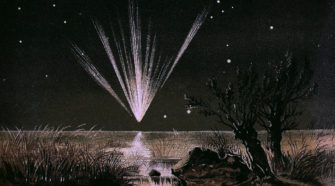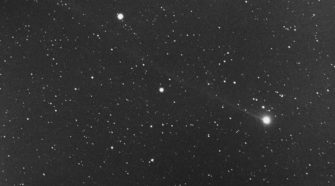Ice and Stone
Special Topic: Past Spacecraft Missions
The majority of what we know about the various planets and many of the other objects in our solar system has come from spacecraft missions sent to those bodies. Even with the best telescopes here on Earth many of these objects are little more than points of light in the sky, and it was only …
This Week in History: June 28-July 4
JUNE 28, 1911: A meteorite falls to the ground near the village of El Nakhla El Bahariya, Egypt. The Nakhla meteorite was one of the first-known meteorites determined to have come from Mars. A fragment of the Nakhla meteorite supposedly struck and killed a dog, although there has been no independent confirmation of this. “Martian …
Comet of the Week: Tebbutt 1861 II
Perihelion: 1861 June 12.01, q = 0.822 AU Two of the brighter comets of the latter half of the 19th Century were discovered by an Australian amateur astronomer, John Tebbutt, who for four decades essentially ran a one-man astronomical clearinghouse from his private observatory near Windsor, New South Wales. In addition to numerous astrometric observations …
Special Topic: The Tunguska Event and Other Recent Impacts
During the early morning hours on Tuesday, June 30, 1908, at around 7:17 A.M. local time, “something” entered the earth’s atmosphere near the Pacific coast of Asia, traveling northwestward. A few km above the surface of a largely uninhabited region of central Siberia, near the Stony Tunguska River some 90 km north-northwest of the village …
This Week in History: June 21-27
JUNE 22, 1978: U.S. Naval Observatory astronomer James Christy discovers Charon, Pluto’s first-known moon. Charon, the discovery of which would be confirmed with a series of transit and occultation events between it and Pluto that began in 1995, provided a major step in our understanding of Pluto’s size and physical nature. Pluto, its system of …
Comet of the Week: 2P/Encke
Perihelion: 2020 June 25.85, q = 0.337 AU In the early 19th Century the idea that comets might return to the inner solar system on a regular basis was still a bit of a novelty. This had been successfully demonstrated by the British astronomer Edmond Halley when the comet that now bears his name returned …






